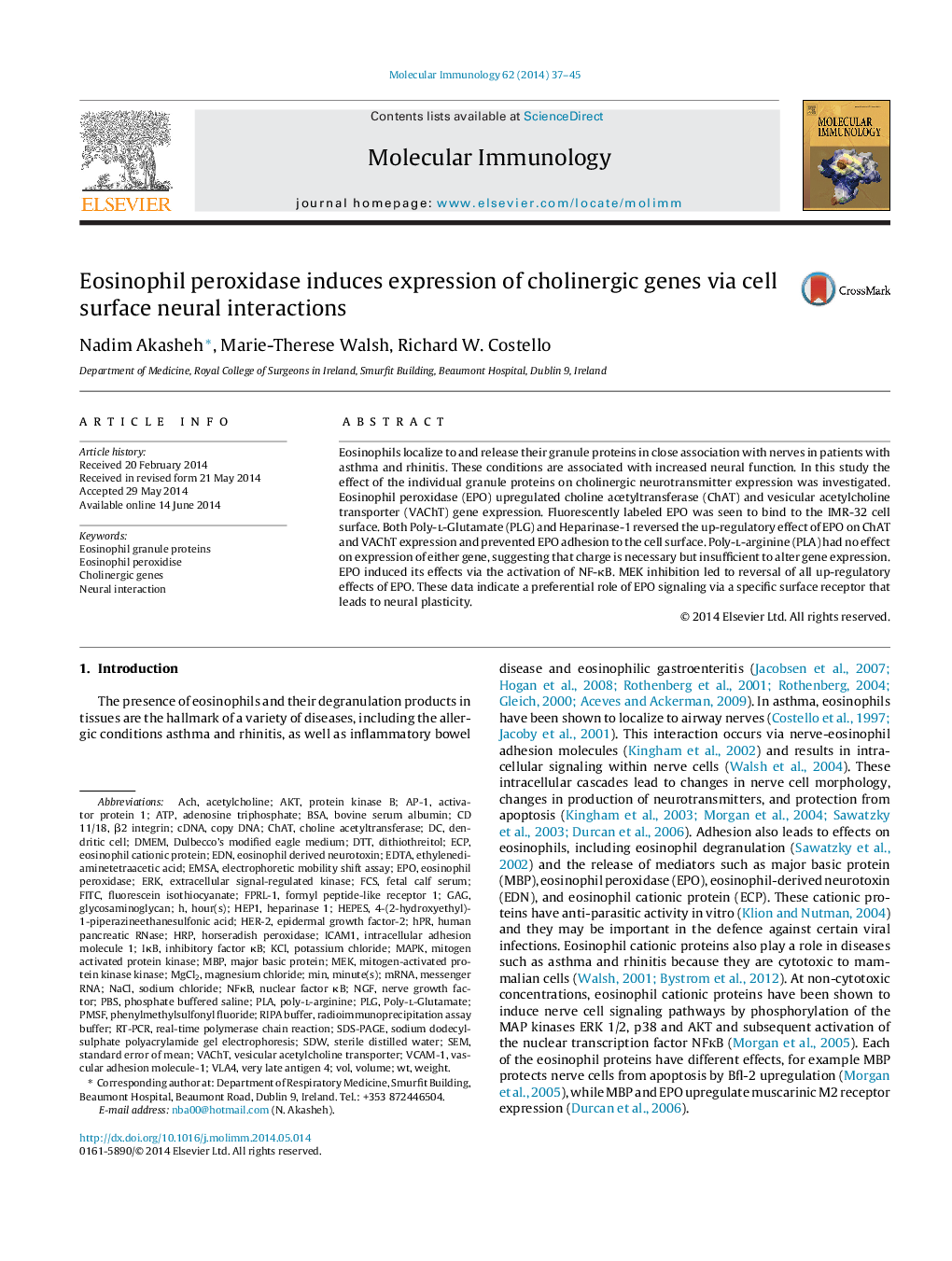| کد مقاله | کد نشریه | سال انتشار | مقاله انگلیسی | نسخه تمام متن |
|---|---|---|---|---|
| 5916764 | 1163756 | 2014 | 9 صفحه PDF | دانلود رایگان |
- Eosinophil peroxidase (EPO) upregulates cholinergic genes in IMR-32 nerve cells.
- EPO induces NF-κB activation in IMR-32 cells.
- EPO interacts with the IMR-32 cell surface at glycosaminoglycan rich moieties.
- EPO charge in necessary but insufficient to initiate intracellular signaling.
Eosinophils localize to and release their granule proteins in close association with nerves in patients with asthma and rhinitis. These conditions are associated with increased neural function. In this study the effect of the individual granule proteins on cholinergic neurotransmitter expression was investigated. Eosinophil peroxidase (EPO) upregulated choline acetyltransferase (ChAT) and vesicular acetylcholine transporter (VAChT) gene expression. Fluorescently labeled EPO was seen to bind to the IMR-32 cell surface. Both Poly-l-Glutamate (PLG) and Heparinase-1 reversed the up-regulatory effect of EPO on ChAT and VAChT expression and prevented EPO adhesion to the cell surface. Poly-l-arginine (PLA) had no effect on expression of either gene, suggesting that charge is necessary but insufficient to alter gene expression. EPO induced its effects via the activation of NF-κB. MEK inhibition led to reversal of all up-regulatory effects of EPO. These data indicate a preferential role of EPO signaling via a specific surface receptor that leads to neural plasticity.
Journal: Molecular Immunology - Volume 62, Issue 1, November 2014, Pages 37-45
